Brühl’s Terrace, or Brühlsche Terrasse, is also known as the “Balcony of Europe.” With its stunning views of the Elbe River, the Old Town, and the famous Dresden Palace, this terrace is one of the city’s most popular tourist destinations. Whether you are a first-time visitor or a seasoned traveler, a trip to Brühl’s Terrace is a must-do experience.
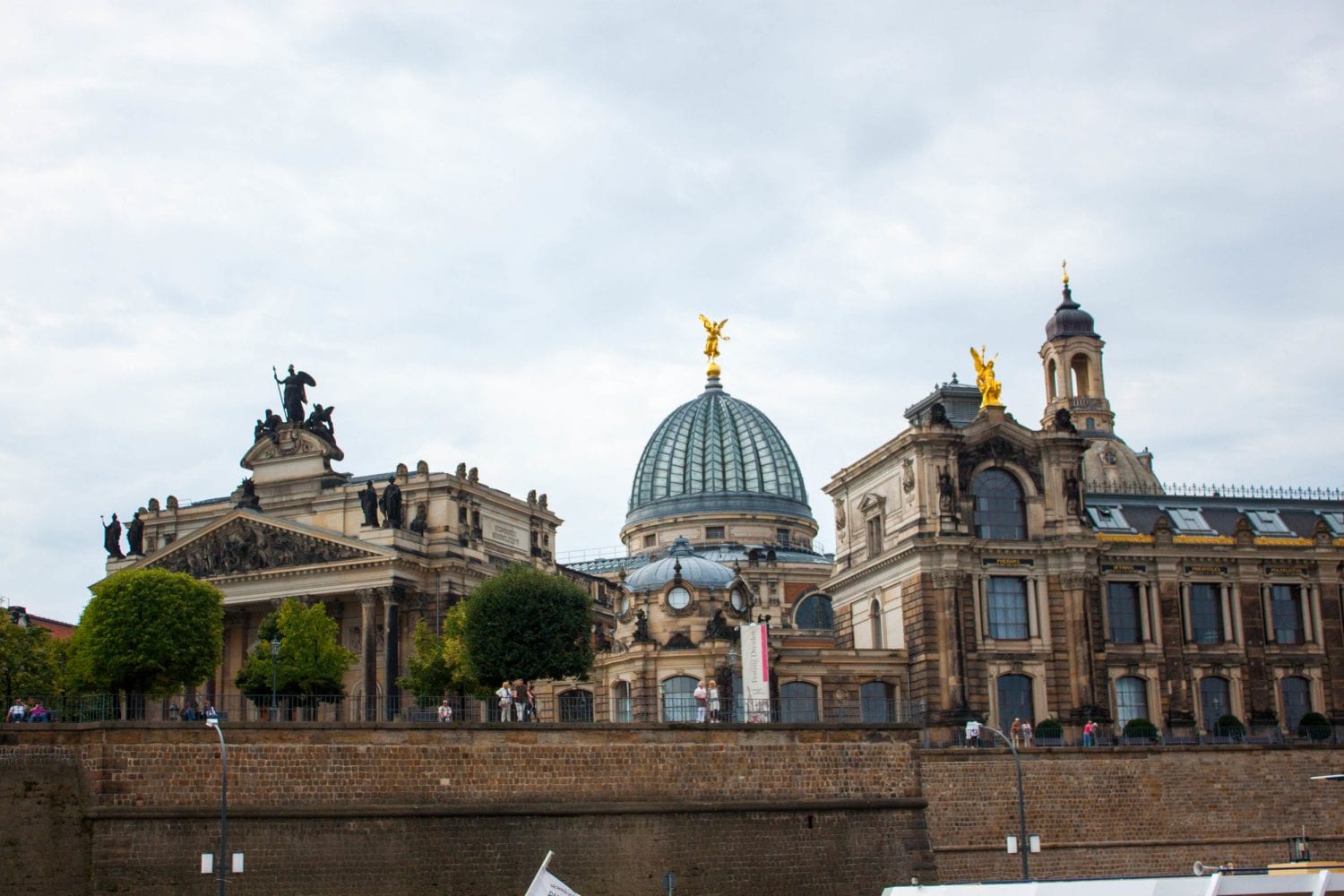
Location of Brühl’s Terrace
The area where the Terrace now stands is where the ancient old city ramparts were built in 1738. Once the Fort was no longer needed to protect the city from invaders, it was converted, by the King’s orders, into an outdoor garden and space for the city’s citizens.
From this high point of view, you can see across the Elbe to what is now called “Neue Town,” the beautiful Saxon State Ministry of Finance building, the Saxon State Chamber building and more.
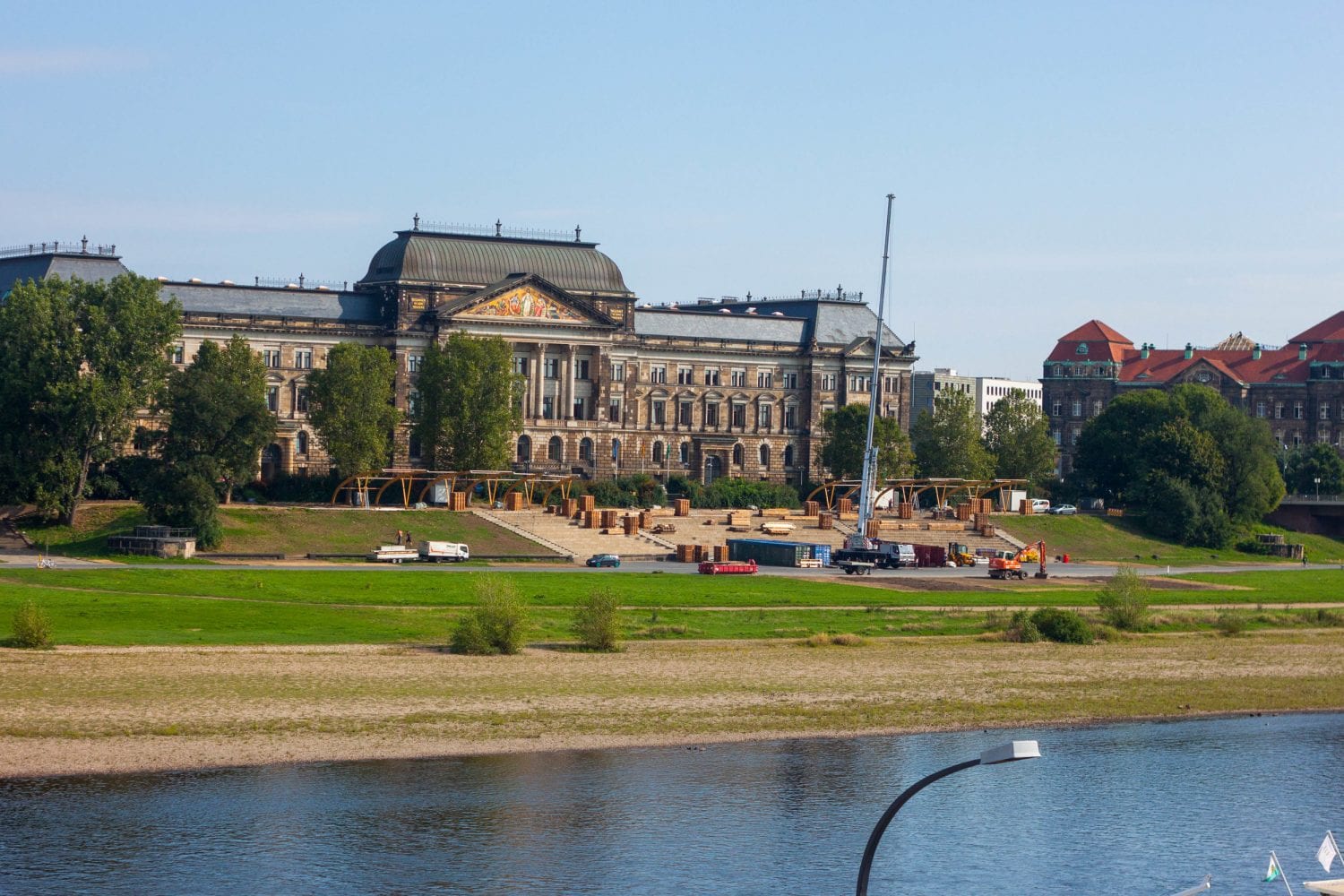
Artisans
We strolled along the cobblestones and stopped to peruse the various artists peddling their wares along the Terrace. It was early morning, and some people were just getting set up. There were so many pieces of handmade art that were truly something unique. The artists were there with the easels and paints, ready to make more pieces for sale.
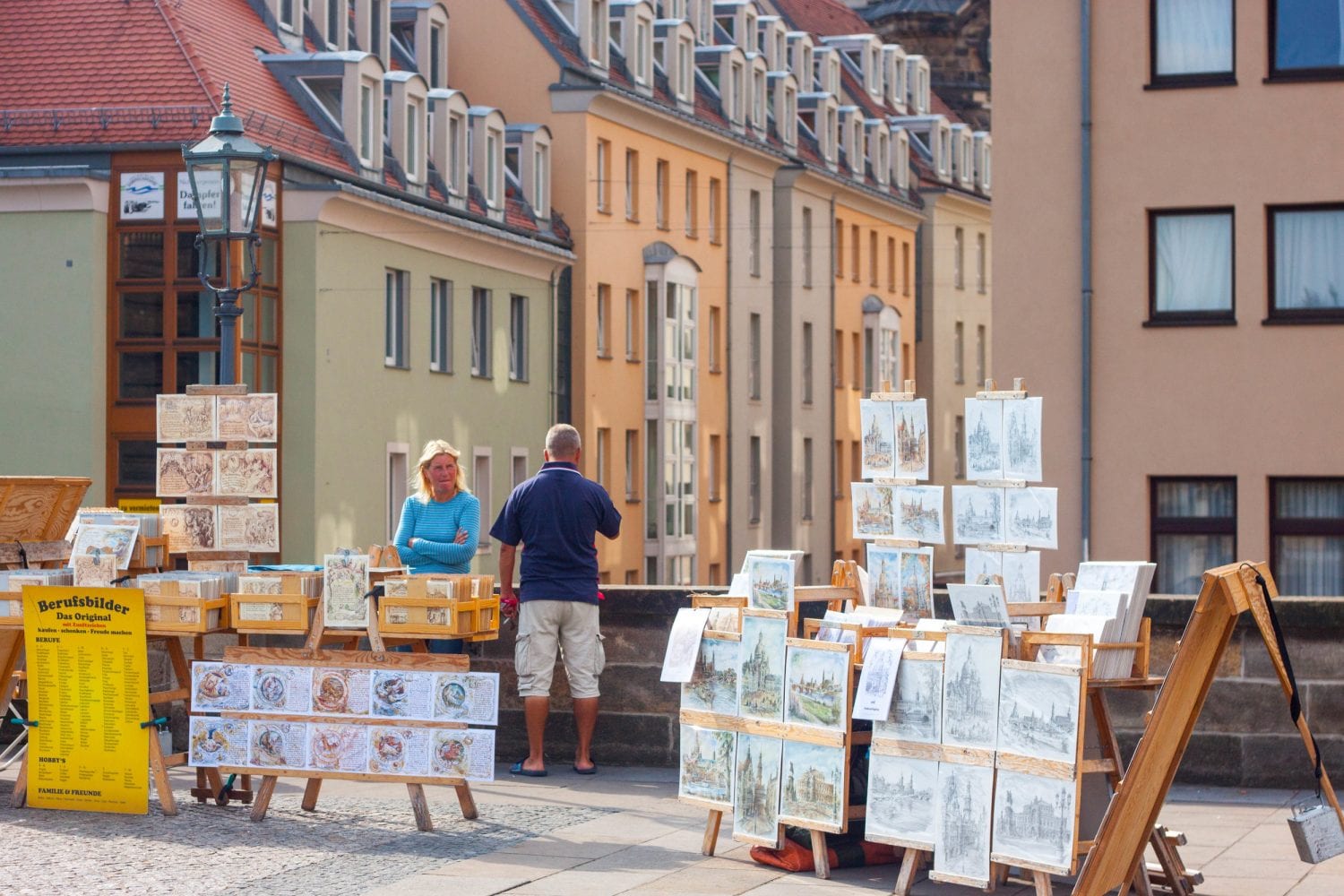
Dresden Academy of Fine Arts
It was fitting to see all these artists out and about, seeing that the Terrace is also home to the Dresden Academy of Fine Arts. This building, topped with its iconic glass “Lemon Squeezer,” was built in 1764 to house the Art Academy. It was used as both a workplace and a training ground for influential European artists. On the side of the building facing the Elbe, the names of Phidias, Iktinos, Praxiteles, Polykleitos, Lysippos, Erwin von Steinbach, Leonardo da Vinci, Michelangelo, Raphael and Dürer are inscribed. Beside this is the motto “DEM VATERLAND ZU ZIER UND EHR” – “For the Honour and Adornment of the Fatherland.” Instead of angels, it is interesting to notice that the golden figures on the roof are Phemes, creatures from Greek mythology. These creatures are the personification of fame and renown. What a perfect reference for artists.
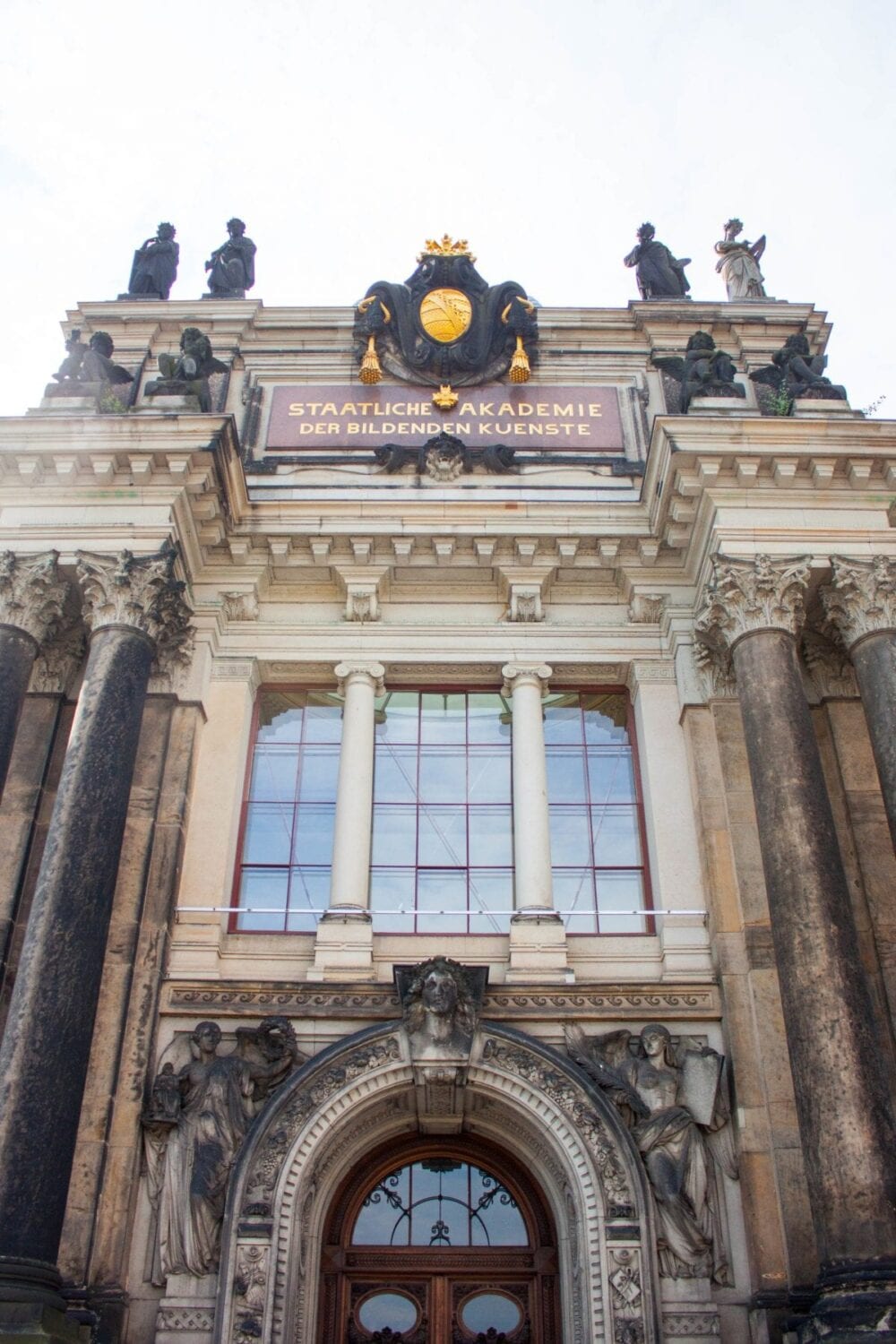
Terraces on the Terrace
There were so many bright and colourful cafes along the terraces where you could just sit down and enjoy a light lunch or cup of coffee while looking out over the gorgeous blue waters of the Elbe.
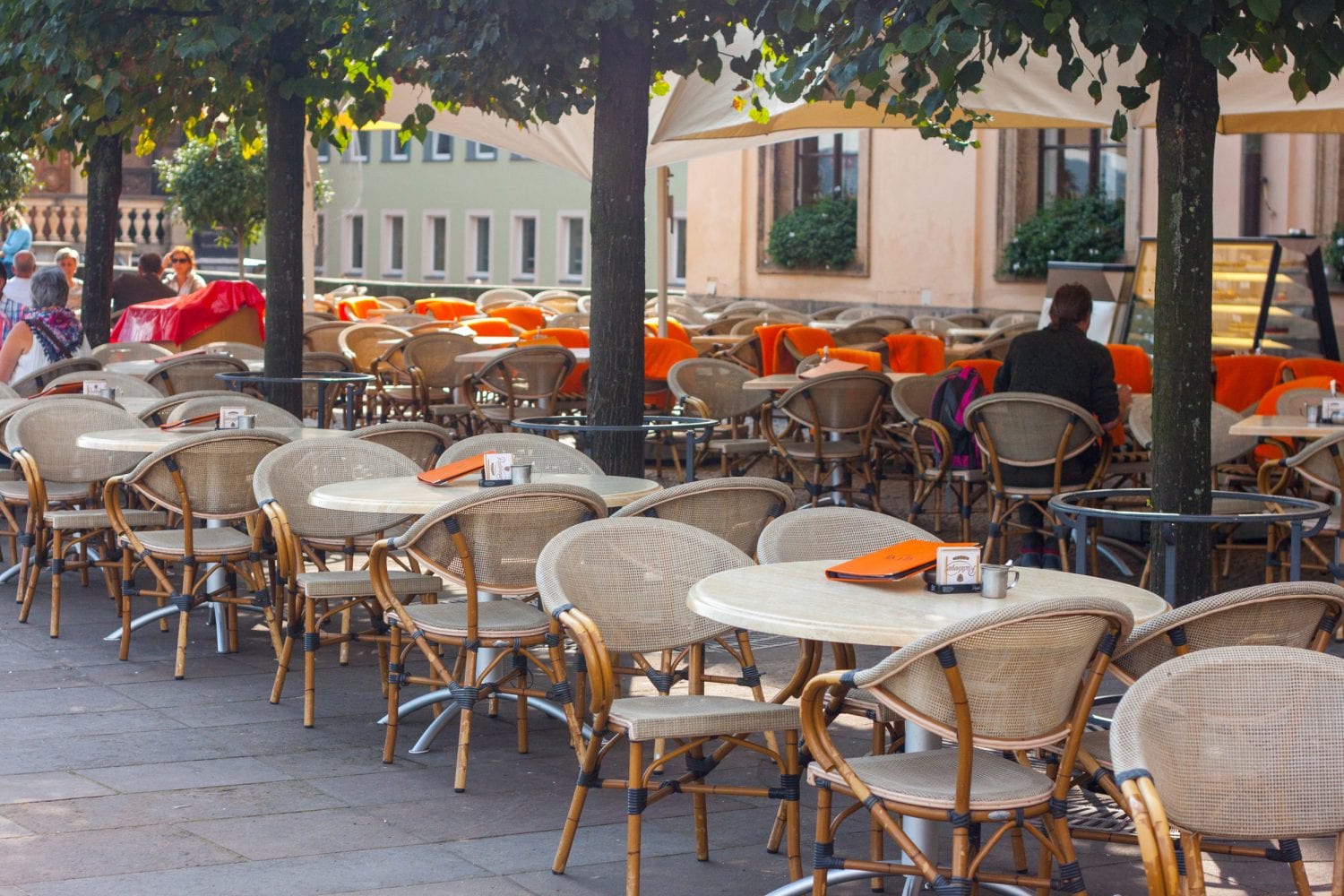
I stopped for a minute beneath the rows of perfectly manicured trees lining the end of the Terrace. You could see the immense towers surrounding the square below the Terrace from this spot. It is an incredible viewpoint of so many different buildings around the city.
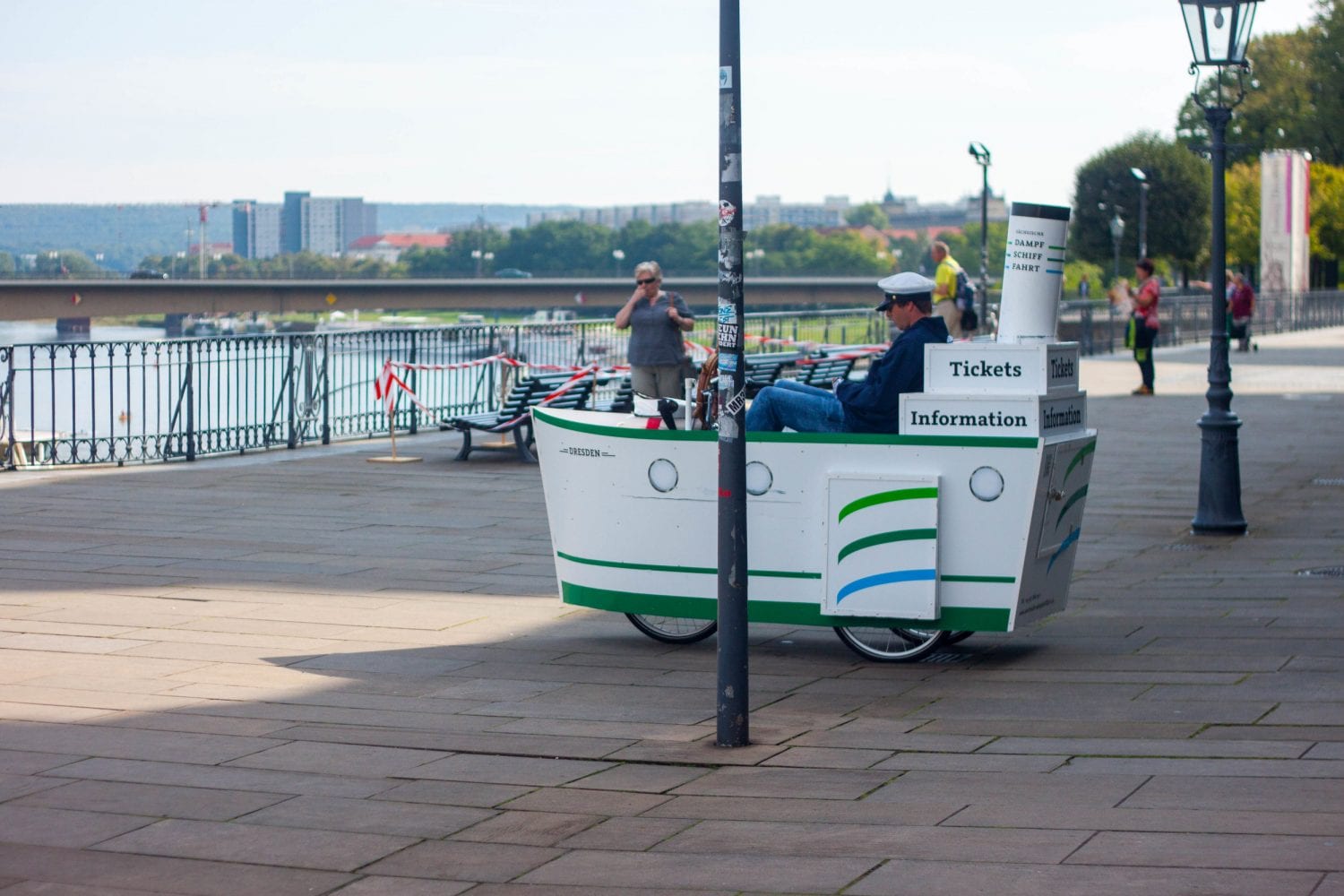
One of my favourite things when travelling is the cheesy tourist traps that some cities are replete with. In Dresden, they had many little boat bikes where the employee would peddle their tours. The boats were so cute, though!!! I was disappointed we had already booked our tickets; I would have loved to give this poor kid some business.
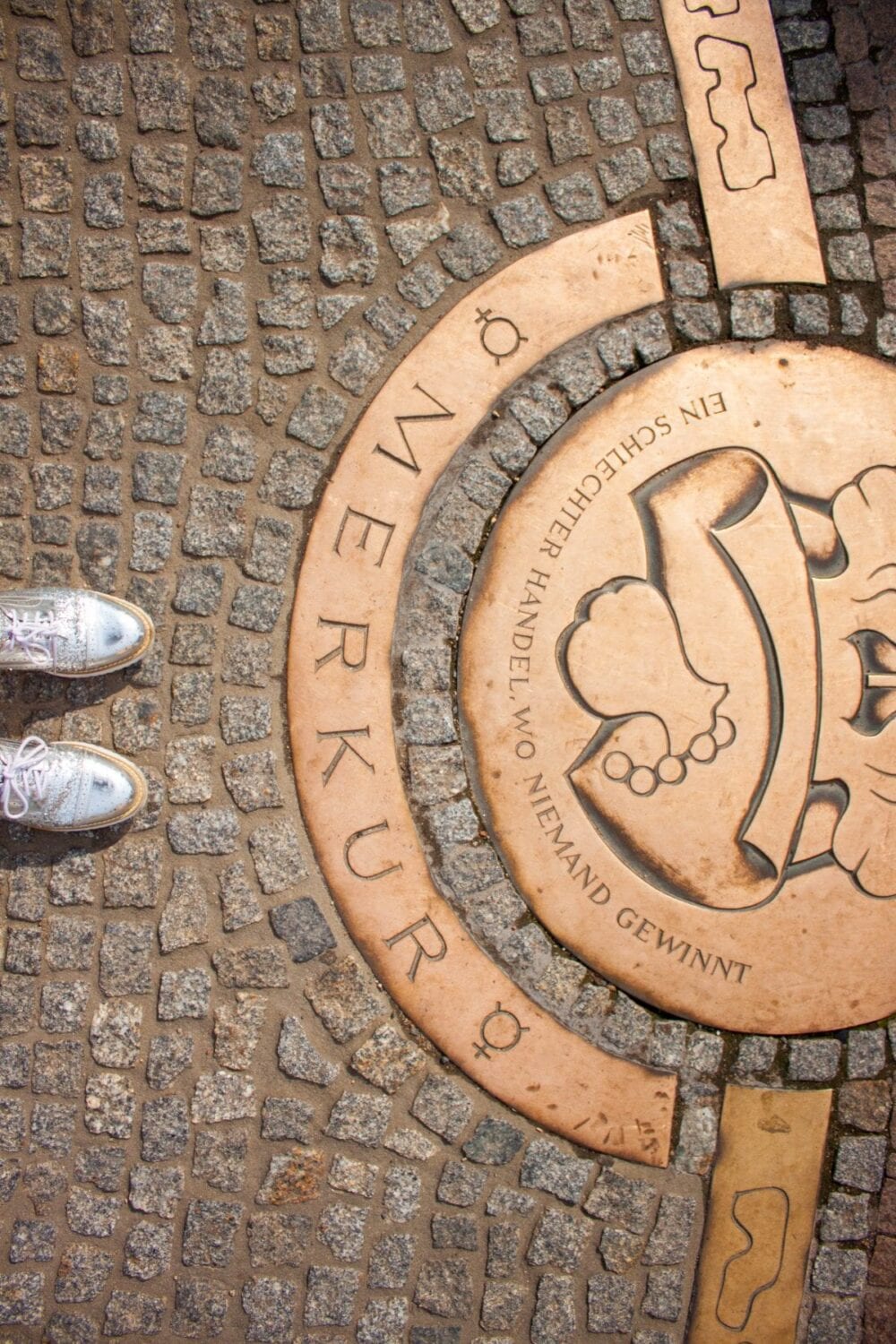
Bronze Signs
All along the terrace are these bronze markings. Each one signifies different planets with a different quote written on the bronze medallion. This one translates into “a bad trade, where no one wins”…I wish I knew more about the contest or what it means, but alas, I do not.
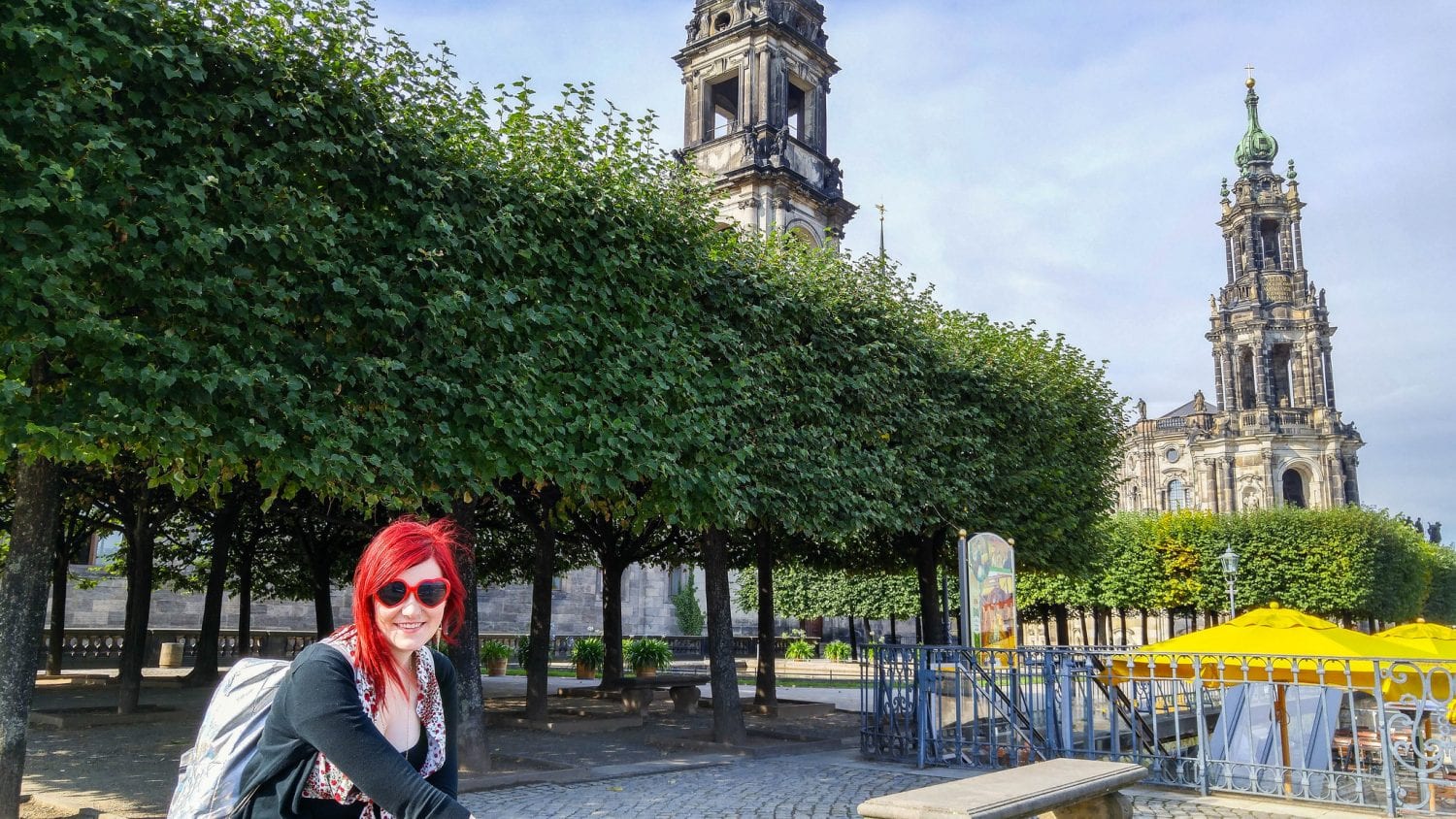
Frederick Augustus
On our way down the stairs, as we left the Terrace to run off to catch our boat, we passed by the Statue of Ernst Friedrich August Rietschel, one of the most famous artists to come out of Dresden. Ernst studied sculpture in Rome, and when he returned to Saxony, he needed to create a piece of work that would show his worth to the people of his hometown. He carved an enormous statue of Frederick Augustus, the King of Saxony, that was larger than life and wowed all the Saxon people.
After proving his worth, he was elected into the art academy in Dresden and became their chief sculptor. His sculptors were just what the aristocracy wanted; they were full of idealism, drama and vigour. They treated men like gods and made their image colossal in nature. Now you can see his work all over the city. It’s only fitting that he should have a sculptor looking down on the towns he helped build.
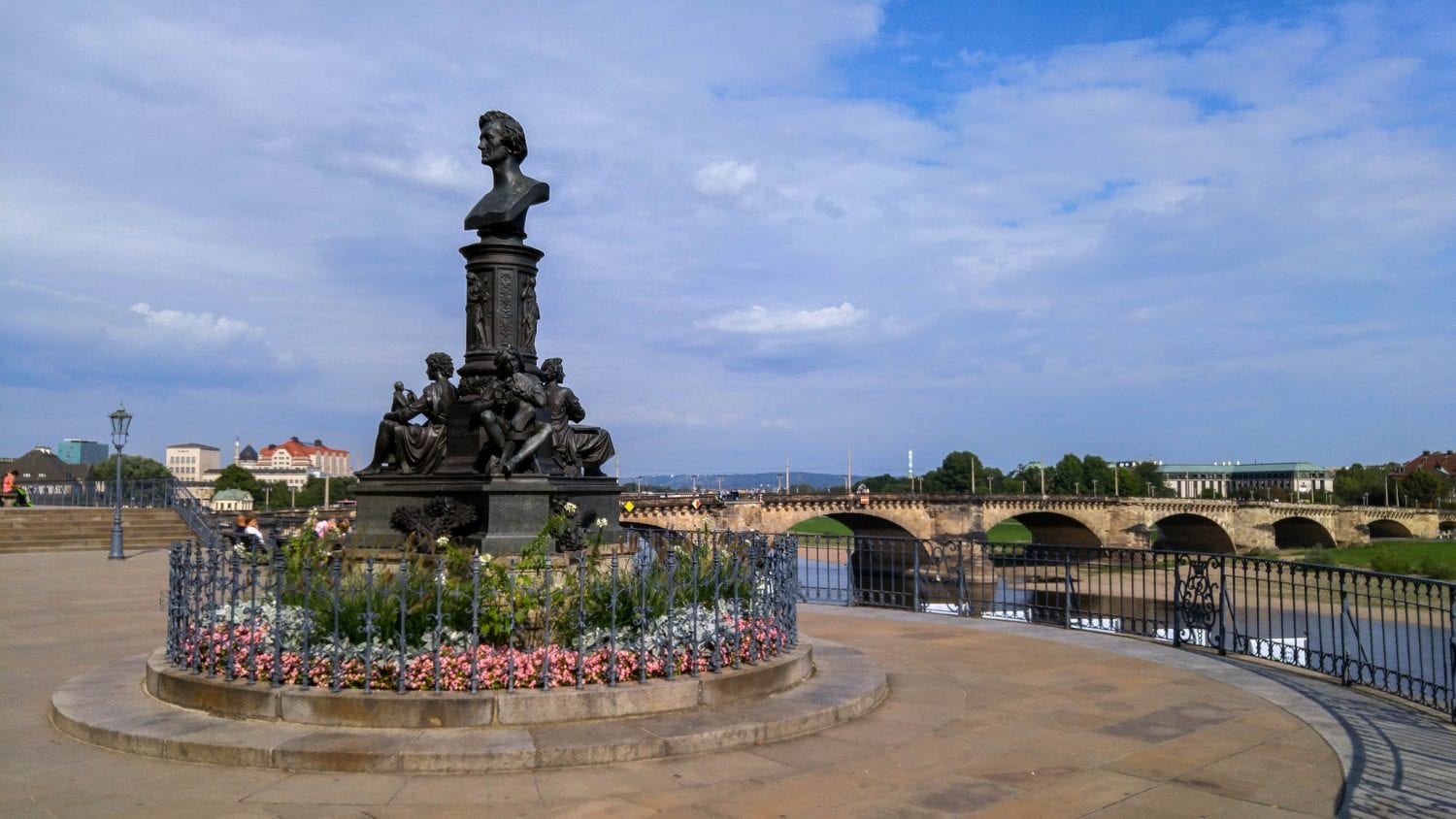
As we walked down the stairs leading up to the river and into the Schloßplatwe stopped to admire the four giant statues carved in bronze flanking the stairway. These sculptures represent the Four Times of Day. Dresden, although now mostly a tourist destination, was once the epicentre of European culture. There was not a time of day when there weren’t revellers in the streets, painters improving their craft, merchant trading their goods on the shore, and Kings and queens ruling Saxony from the castles above. These statutes seem to reflect that time cannot be stopped, and everything changes, just like the city itself.

Brühl’s Terrace is a remarkable attraction that offers a unique perspective of the city of Dresden. With its stunning views, rich history, and beautiful architecture, this terrace is a must-visit destination for anyone traveling to Dresden. Whether you’re a local resident or a tourist, a trip to Brühl’s Terrace is sure to be a memorable experience.
Happy Travels, Adventurers



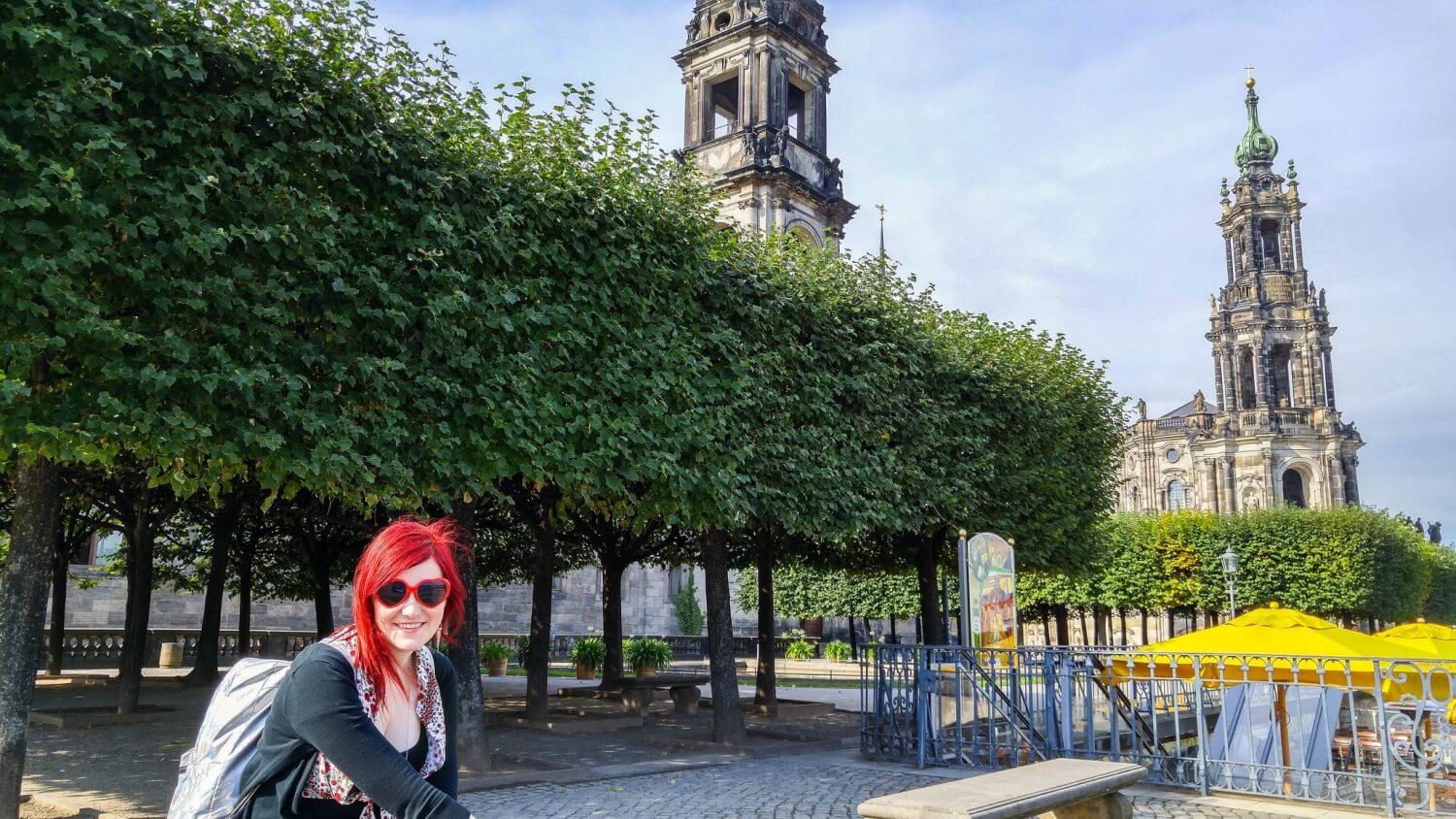
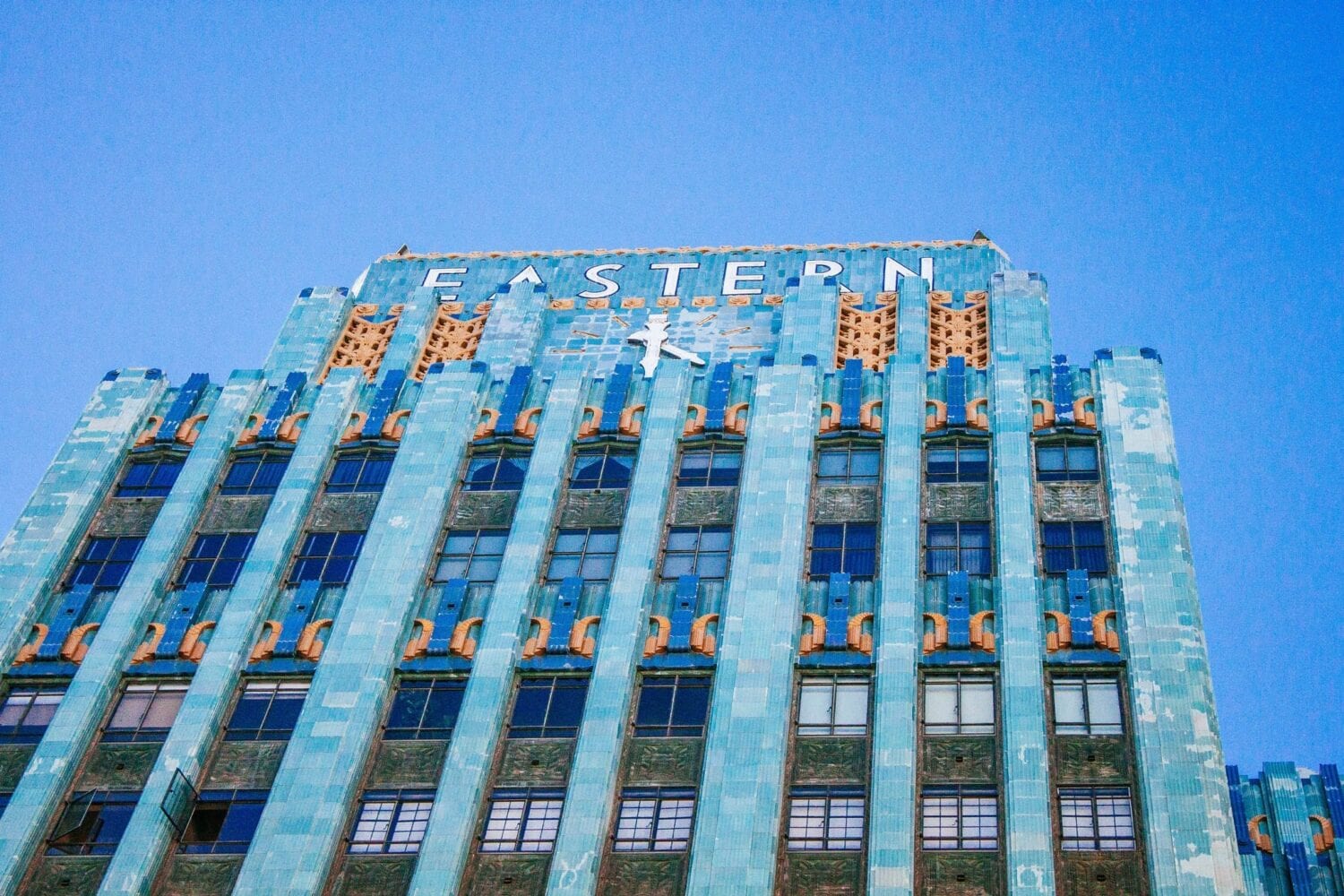



Leave a Comment